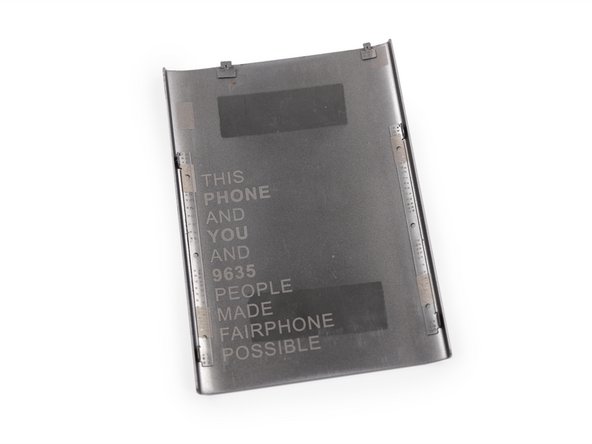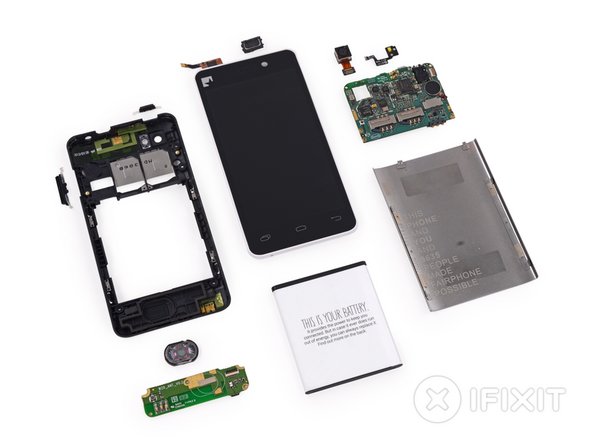I admit it. I’m one of millions of Americans sporting a slick, wafer-thin cell phone. I carry it everywhere. I trust it to wake me up at 6:30 am. I rely on it to track my running times. It’s my grocery list, my map, my photo editor—it’s my second self. And, like so many others, I’m rarely (if ever) without it.
But if we all knew a little more about our beloved smart phones—found out where they come from and how they’re made—we might discover a tarnish in the gleaming surface of our phones. Our smartphones actually aren’t all that smart: they’re harming workers, poisoning critical ecosystems, and challenging the premise that technology makes the world better.
The Cell Phone Problem
Just last year nearly 2 billion cell phones were sold worldwide. But smartphones, like all electronics, are notoriously complicated to manufacture. Modern smartphones are composed of anywhere from 500 to 1,000 individual component materials—from heavy metals to chemicals. Their supply chains wrap all around the globe. And because they’re so vast, supply chains are also difficult to track. Materials can change hands hundreds of times—between miners and middlemen, distributors and factories—before they ever make their way into our electronics.
Manufacturers have pushed so fast for technological advances that they haven’t (yet) fully accounted for the human cost of their products. The overwhelming demand for new gadgets has fueled war, human suffering, and environmental degradation around the globe. In the Eastern Congo, armed groups wage campaigns of violence and rape with money made from the sale of conflict minerals—gold, tantalum, tin, and tungsten mined from dangerous mines, sometimes under conditions that aren’t far from slavery.
Opening The Supply Chain
My company iFixit—the free repair manual for everything—is known for our open source repair information, our product teardowns, and our growing international community of fixers. We believe that repair helps the planet, saves money, and empowers people to more than just passive consumers. We want to know where our phones come from, because we know that materials in our gadgets shape the lives of people along the supply chain—and not always for the better.
Fairphone’s supply chain, though, is radically different from any electronics company we’ve ever encountered.
This one-year-old Dutch social enterprise—initially an awareness campaign against conflict-minerals in electronics—realized that awareness wasn’t actually solving the cell phone problem. Talk is too cheap.
I had a chance to speak with Tessa Wernink, Communications Director at Fairphone. And she explained, “You can campaign all you want and raise as much awareness as you want, but if there isn’t an alternative then what’s the use? We felt that to truly understand the supply chain we needed to start making a phone. It is a process toward fairer products and a fairer supply chain as well as giving people the possibility to buy as a political act.”
Fairphone decided that it was time to put their money where their mouth was. Their million dollar bet: that they could produce an elegant phone that focuses on responsible, transparent design.
Fairphone is at the leading edge of a new wave of companies realizing that there is profit in doing the right thing. Their initial campaign sold 25,000 phones, quickly exhausting their initial production run. And although it’s far cry from Apple’s record of 9 million iPhone 5Ss in a weekend, Fairphone sales are impressive for a startup with no track record.
Fairphone is on to something. There seems to be a growing sense of disillusionment with the way technology companies operate. In the summer of 2012, Apple attempted to abandon EPEAT (the leading green electronics label) and was forced to apologize after significant consumer backlash.
A few months ago, Phonebloks—an idea for a more lasting mobile phone made up of detachable modules that can be swapped out and upgraded—took the web by storm. And while small operations like Phonebloks and Fairphone probably won’t make a dent in Apple or Samsung’s profits, these green tech renegades are having an impact just by being there.
“Whether or not it’s our company that grows bigger isn’t the point. Fairphone and its community wants to try to influence the industry, and to set an example for systematic change,” says Wernink.
Our Next Step Toward Change
When iFixit handles a device—whether it be a smartphone, computer, or tablet—we always measure our findings based on repairability. Is the device’s battery easy to replace? Can you fix a cracked display without hassle? We’ve never awarded a phone more than 9 out of 10 on our repairability score, because the last point is for a public repair manual for the product. Even Motorola, maker of the most repairable smartphone we’ve disassembled, hasn’t released the repair manual for their phone. So we were very excited when Fairphone asked us to help them write a public repair manual for their first phone. Fairphone took care of the beginning of their phones’ lives; we wanted to help people take care of their phones’ lifespan.
We wrote a Fairphone repair manual—offering guides for everything from display, battery, and motherboard replacements. Fairphone is making sure replacement parts are in ready supply, and they are including the iFixit app on every phone—so every phone comes with the repair manual. Fairphone may be starting small, but they are planting the seeds for a better social and ecological future. And we want to help them do it.
Honestly, I’m not sure if completely ethical cell phones are part of our future. I’d like them to be. A lot of my friends would, too. Someday, I want to buy a phone without having to worry about whether I’m funding child labor in Indonesia or 24-hour shifts in China. But will big tech ever have strong enough incentives to make a long-lasting, environmentally sustainable smartphone? I’m not entirely convinced that our addiction to new tech will ever come without the price of environmental and human suffering. But wouldn’t it be great if it did?






0 comentários